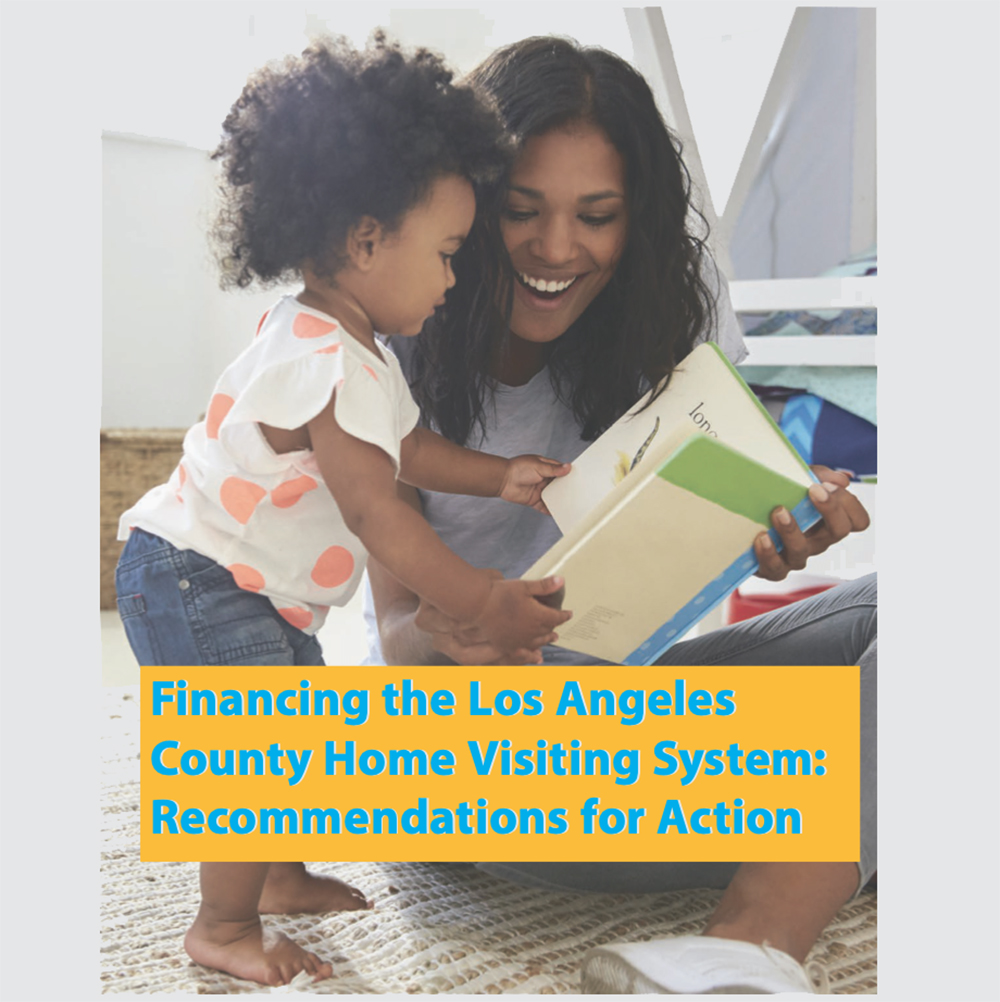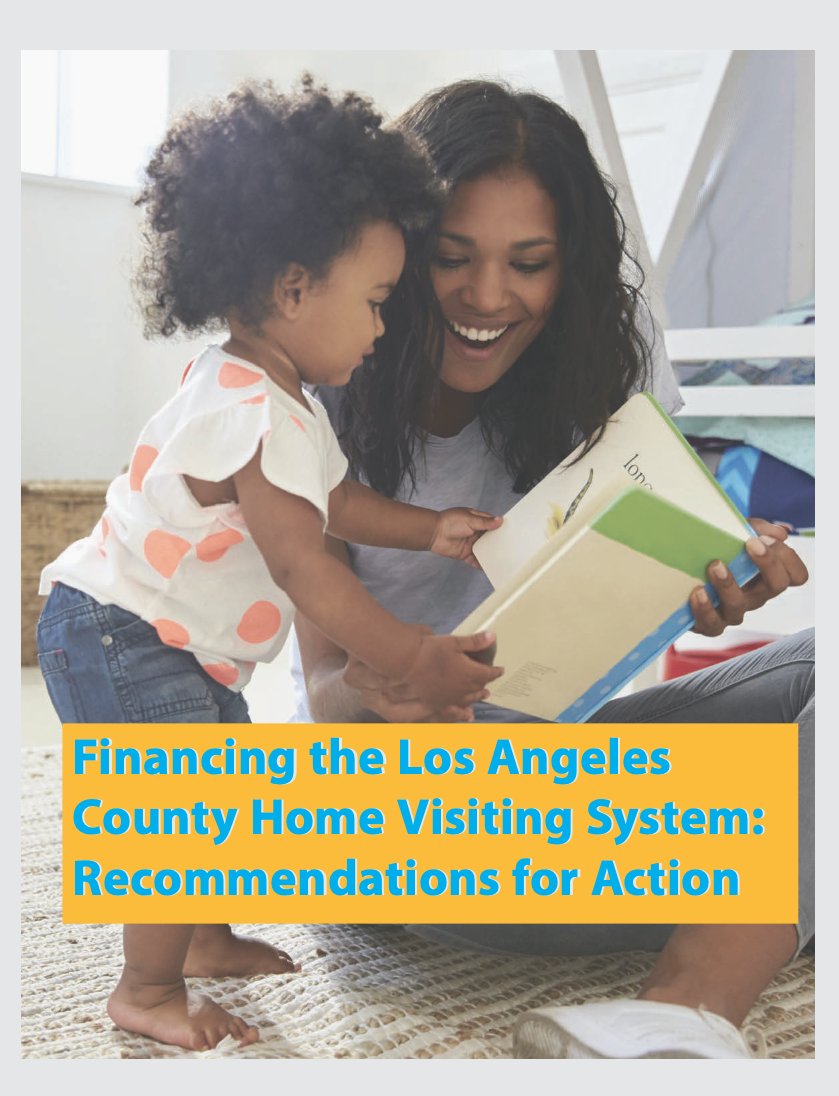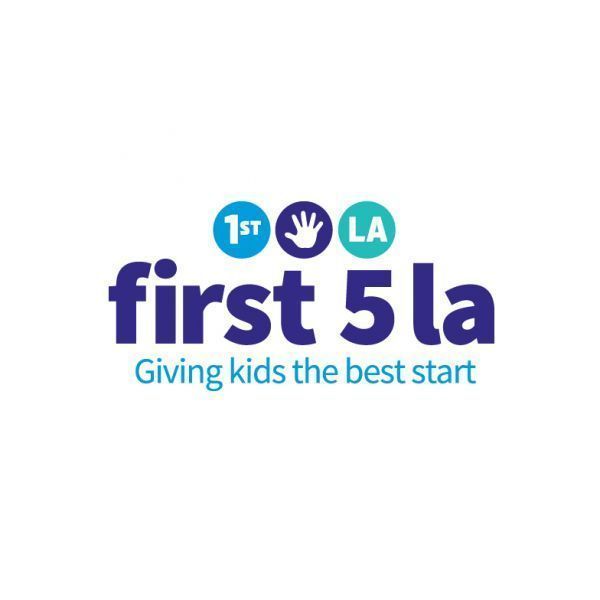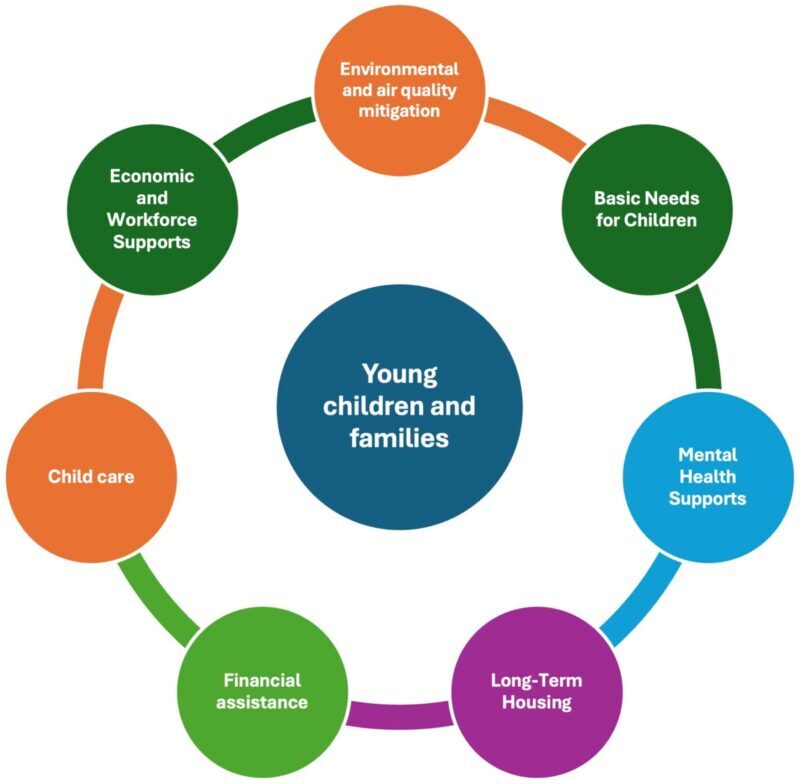June 2022
Investment in home visiting in Los Angeles (LA) County began in 1997 and has since grown substantially, using a variety of federal, state, and local public funds, as well as some private dollars, to support and grow a home visiting system. LA County has used more funding streams for this purpose than virtually any other state or county area across the nation.
In December 2016, the LA County Board of Supervisors unanimously passed a motion regarding home visiting, which directed the Department of Public Health (DPH) to take several actions, including development of: “a frame- work to maximize resources by leveraging available funding, and, where possible, identify new and existing, but not maximized, revenue streams (through state and Federal advocacy, and opportunities for local investments) to support home visiting expansion.” The findings and recommendations in this report add to the ongoing response by DPH and its partners to that Board directive.
Such a framework to maximize resources is needed. Over- all in the US, sources of funding for home visiting have in- creased dramatically all across the country in the past two decades, driven by a federal home visiting program enacted in 2010, flexibility in other federal block grants, increased use of Medicaid, and more state and local investments. These factors had impact on California and LA County. For example, in 2018, California joined the many states investing general revenues in home visiting programs, and a share of CalWORKs (TANF) dollars were dedicated to home visiting.
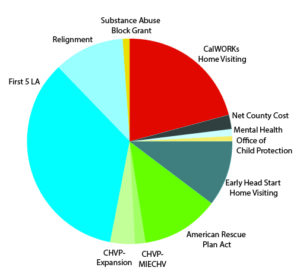
The graph shows the distribution of the nearly $100 million investment in home visiting financing by funding stream for FY 2022, with First 5 LA as the largest share. (For details see Tables 3 and 4.) Some funds for home visiting are set to end in the coming year, including federal dollars from the American Rescue Plan Act (ARPA), as well as dollars from the LA County Department of Mental Health (DMH), and Office of Child Protection (OCP).
Other sources of financing for home visiting are emerging, adding resources and complexity. This includes use of Family First Prevention Services Act (FFPSA) and Medi-Cal billing for eligible mothers and children.
The three primary fiscal challenges for the LA County home visiting system are to: maintain and expand funding, better leverage federal funding streams, and set up administrative structures that maximize available funds while reducing burden on providers. Ensuring funds sufficient both for direct service delivery and administrative functions (e.g., training, data collection) is essential for having an efficient, effective, and sustainable home visiting system. Based on a scan and fiscal mapping project, this report makes specific recommendations focused on financing the system overall. See below to view the recommendations and report.
To download the report, click here.
